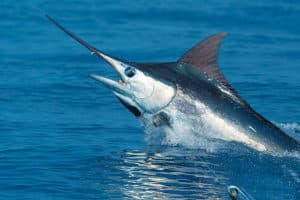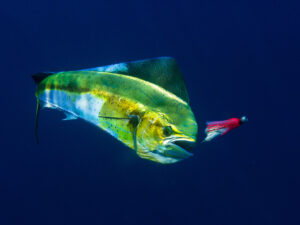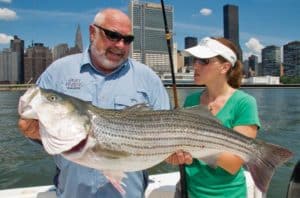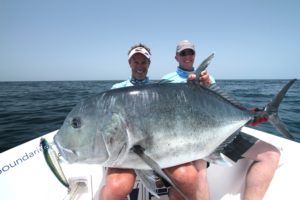Shallow Water Rockstars
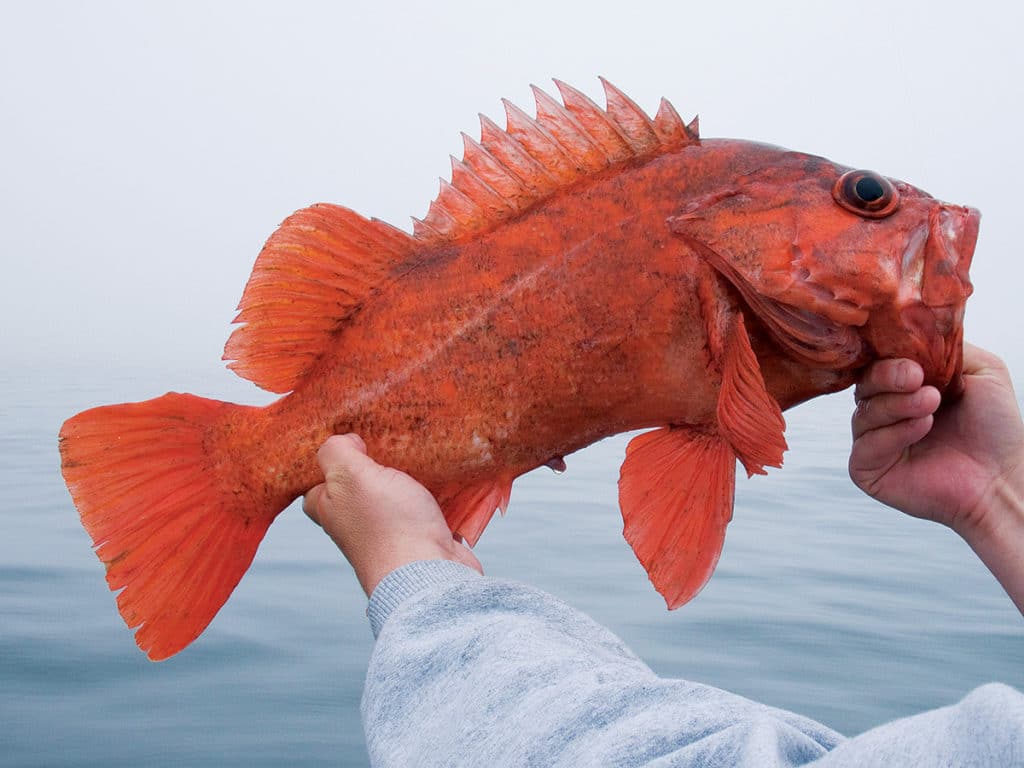
As fishermen, we all occasionally have those “aha” moments that completely change the way we look at a particular fishery. As monumental as these can be, such moments rarely come in the form of a dramatic revelation. Instead, they’re usually subtle enough to go unnoticed for days, sometimes weeks. Like most, I’ve experienced my share of them over the years, but for me, the most memorable occurred a few years ago while fishing for rockfish off the coast of Long Beach, California.
The reds (vermilion rockfish) were biting for a few weeks on the South East Bank, a hard-bottom shelf in 250 feet of water a few miles outside Long Beach Harbor. I had enjoyed a successful trip there the previous weekend. Using frozen squid for bait on a dropper loop, we made long drifts over the hard bottom. The fishing wasn’t wide open, but there were enough reds scattered around the bank that a friend and I were able to catch our 10-fish limits within several hours.
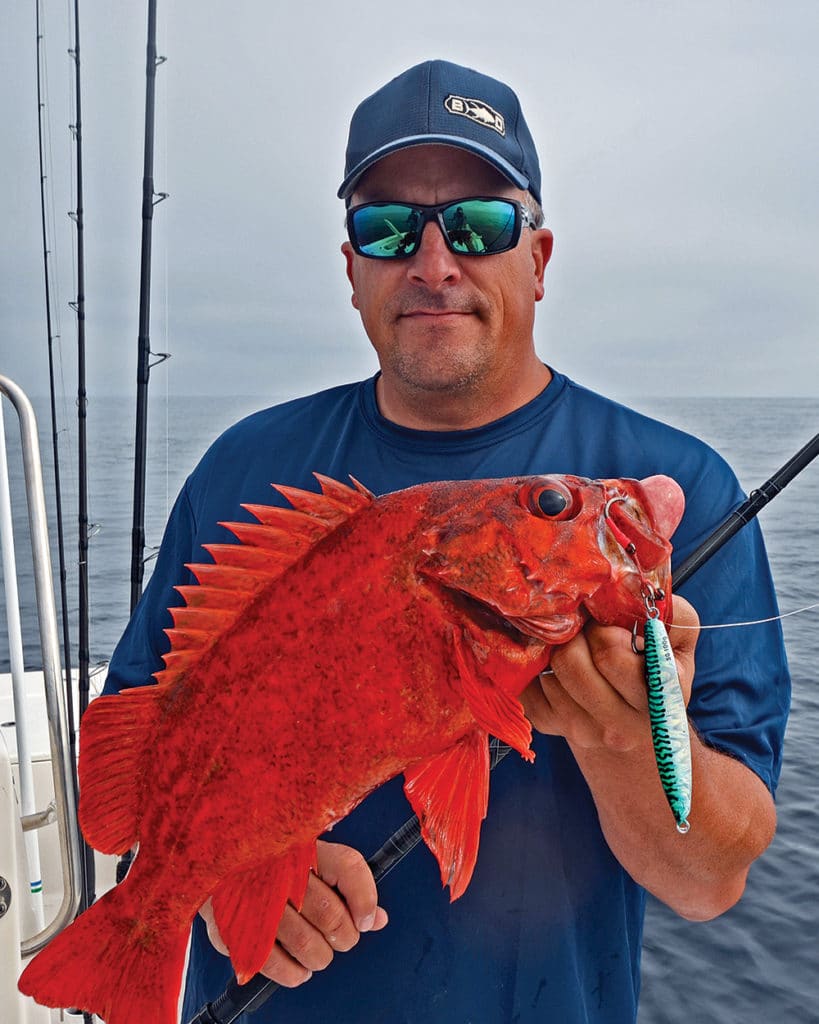
I returned to the area where the reds had been biting to find lots of boat pressure and zero signs of my desired quarry. There were still plenty of rockfish to be caught on the bank, but the 3- to 5-pound reds we’d caught the week before were replaced by fish that averaged less than 6 inches long. After a few drifts and multiple tiny rockfish, I was pretty sure I needed to look somewhere else — the problem was I had no idea where.
With minimal private-boat rockfishing experience to fall back on at the time, I headed to one of the few other areas I knew. In 150 feet of water, the hard-bottom area was much more shallow than the areas I fished earlier, but the small rockfish were there in force as well. During my second drift over the bank, I metered a small rock, and moments later my friend’s rod bent double. The fish was big, and after a hard fight on bass gear, he brought a 15-pound lingcod to gaff.
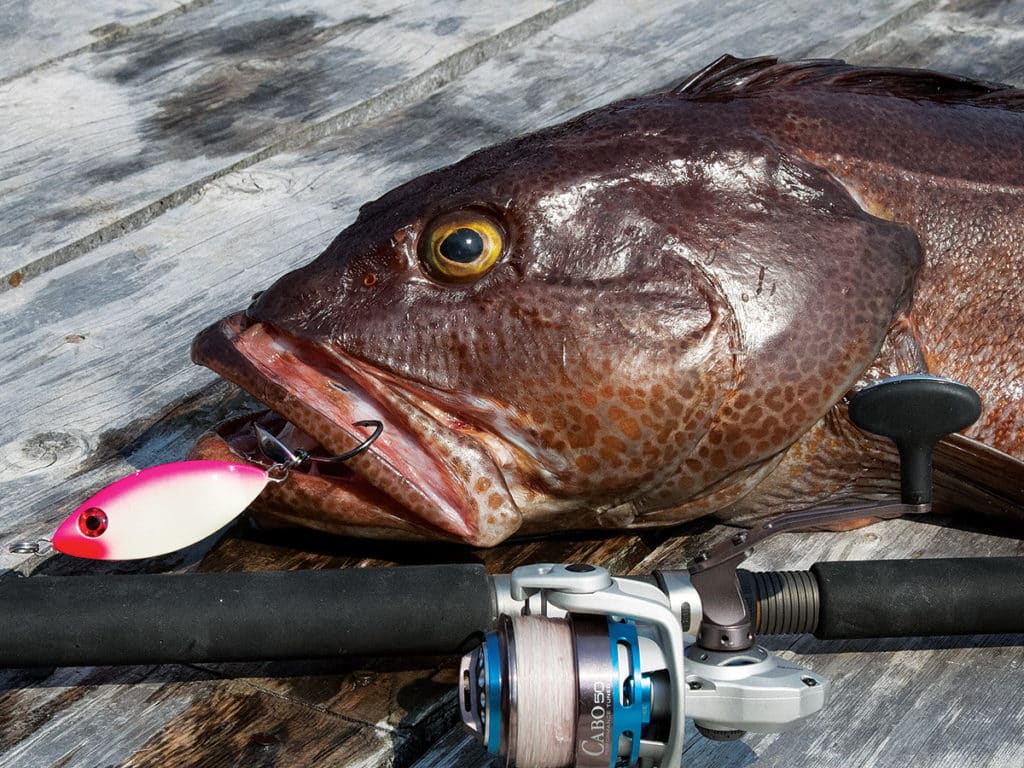
I quickly repositioned the boat for another drift over the rock and we hooked two more lingcod, one making it into the boat and the other winning its freedom in the rocks. Rather than continue making short drifts over the small spot, I used the SpotLock feature on my Minn Kota trolling motor to keep us positioned over the spot. For the next few hours we caught several more lingcod, as well as California sheephead, huge 5- to 6-pound reds and a 7-pound brown rockfish, the biggest I have ever seen. On the way home, my friends and I discussed how that magic rock produced the best local shallow-water rockfish trip any of us had ever experienced.
Our magic rock never produced as well again, but I finally realized my aha moment the following weekend. I spent some time metering around the hard bottom near the same area and found even more small rocks. One of those rocks kicked out some big fish that day, and a different rock produced on the following trip. Once I mapped the area, I expanded my search to include new waters and began to build a network of small spots from the Santa Monica Bay to San Diego. While my collection of rockfish spots and my angling techniques will forever be a work in progress, I can share some tips that provide great insight to any angler who fishes these popular bottomfish.
Do Your Homework
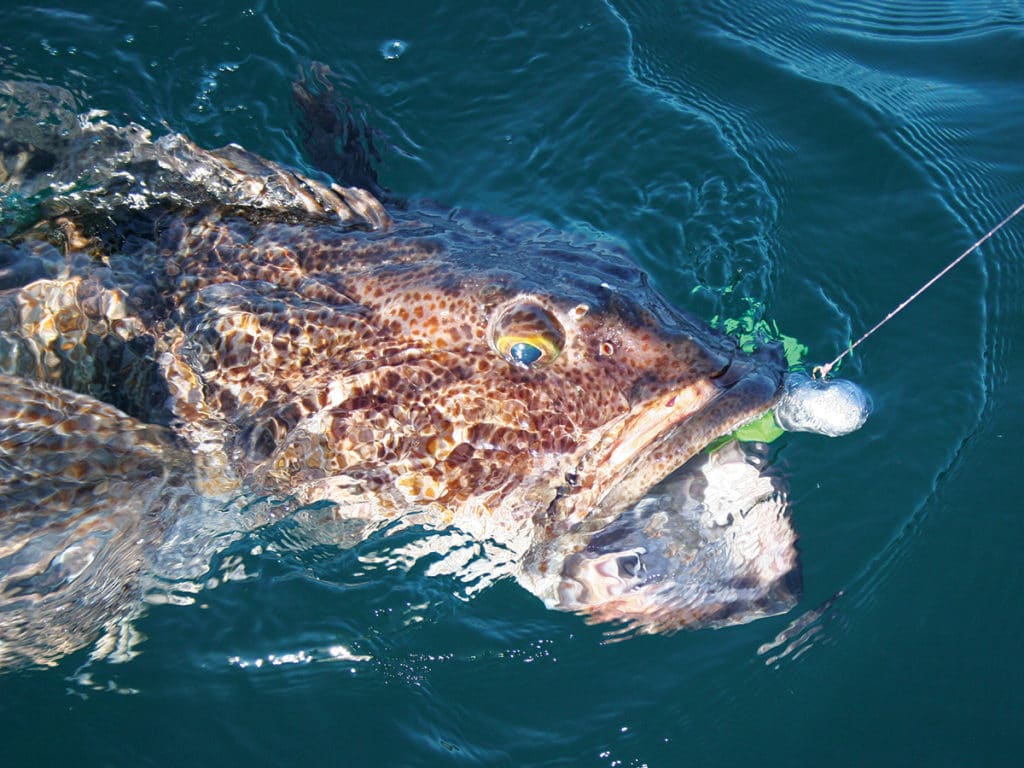
Blind luck — like that I experienced drifting over the right rock at the right time — can make for some memorable fishing trips. But it does not ensure your future fishing success every trip, even if it produces at times. If you want to become a better fisherman, you need to dissect your lucky days and figure out how to replicate them. For example, I’ve learned that in heavily fished areas, smaller spots are more likely to hold big fish because they receive less fishing pressure.
Small spots are not always as easy to find as they are to fish because they don’t show up on charts. This is where your homework comes into play. Google Earth is a good place to start when looking for potential rockfish spots because it shows bottom topography and approximate water depth. When targeting shallow-water rockfish, you’re specifically looking for hard-bottom areas and canyon edges. On Google Earth, such hard-bottom areas will usually show up as lumps and ridges. Just make sure to check the depth; that perfect-looking high spot might not be so perfect if it’s sitting in 1,600 feet of water.
“There are rockfish spots scattered along the California coast and islands from Point Conception to the Mexican border. Some of them are more user-friendly than others, and the difficulty level is directly related to how much fishing pressure the area gets.”
Once I’ve located an area that looks like it has some potential, I’ll take a closer look at it using the sonar-charts function on my Navionics Plus phone app. The map’s precise detail allows me to get a feel for the area long before I get out on the water in the boat.
While every rockfish zone along our coast looks different on the chart, there are some features they all have in common. Rockfish are structure oriented, and in most cases, that structure comes in the form of hard or rocky bottom. While it’s difficult to judge the hardness of the bottom by looking at a chart, there are indicators that will allow you to make an educated guess. Sharp changes in water depth usually signal hard bottom. It might be a pinnacle or canyon edge that stands out on the map, but the hard bottom around those features likely holds rockfish. When it comes to canyon edges, the steeper the incline, the harder the bottom. So, if a canyon edge looks pretty gradual on the chart but gets steep around a point or corner, there is likely hard bottom associated with the steep part. When fishing a new area for the first time, I’ll always start at one of those steep edges and follow the hard bottom away, looking for rocks or schools of fish.
Gearing Up
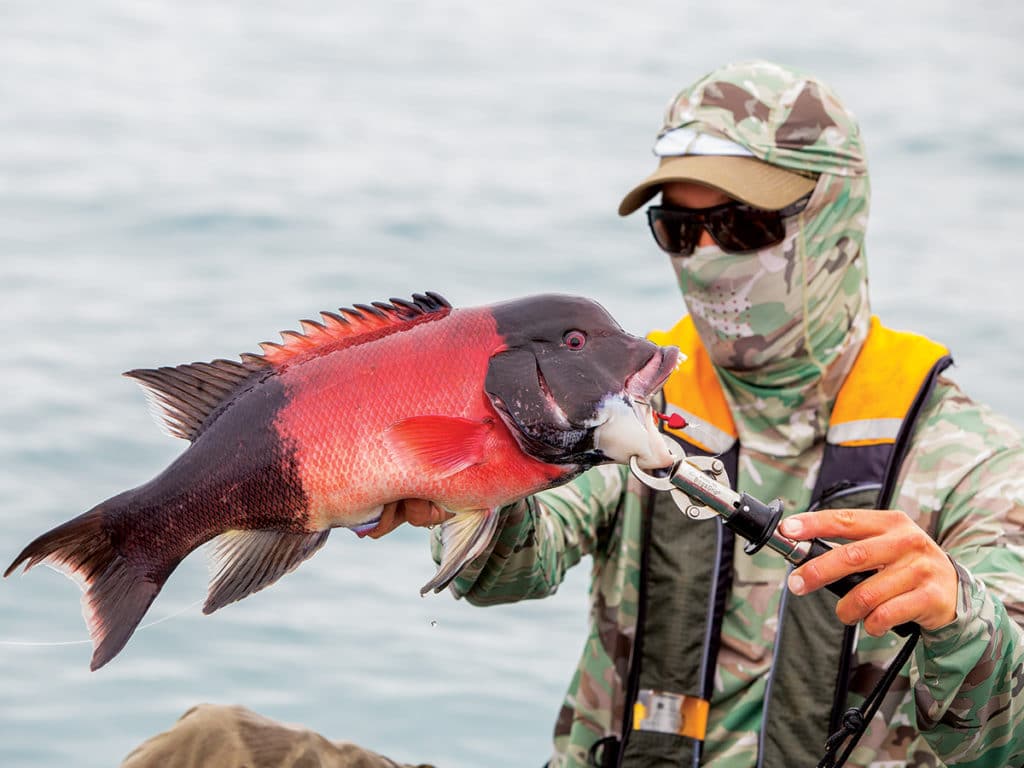
Put simply, if you’re using tackle or electronics that are more than 10 years old, you’re doing yourself a huge disservice. The term “game changer” is so overused, but there’s really no other way to describe the advancements available to anglers today. Take, for example, the app I mentioned earlier. I also run the Navionics Plus Regions card on my boat. This card allows me to view records of what my fish finder reads, upload that information to the Navionics website, and days later receive updated charts of the area I fished.
If you’ve spent any time fishing rockfish, I’m sure you’ve noticed that most charts show only vague topography data. With this new technology, you can drive around an area and chart it out with 1-foot depth lines. So instead of looking at a chart page with random waypoints for your spots, you’ll instead see a detailed chart of the area. Having the ability to visualize the layout of the structure allows you to fish it more effectively by planning your drift direction.
Speaking of drift direction, adding a trolling motor with a spot-lock function (both Minn Kota and Motor Guide offer this) is a sound fishing investment. Even on calm days, the current can be strong enough to blow you past a spot in seconds. I’ve fished days where the current was strong enough to resemble a river coming off the back of my boat. Yet the trolling motor held me in position. I sat 200 feet above a rock pile that wasn’t much bigger than my boat, and loaded up on fish.
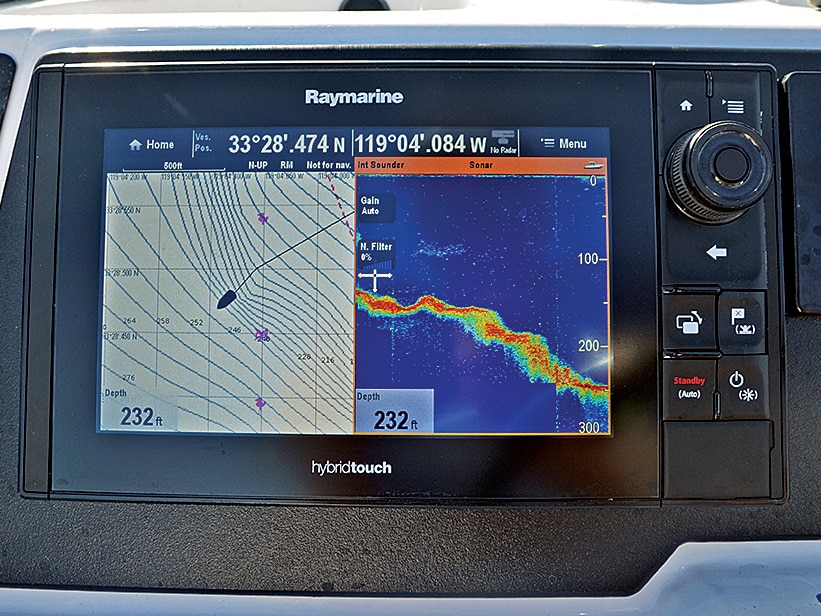
The most frequently overlooked aspect of gearing up is getting the right fish finder. I recently upgraded to a Raymarine es98 with a through-hull chirp transducer and a side-vision module. Most brands offer similar features these days, albeit called by different names.
The advantage of this fish finder is twofold. First, its through-hull transducer allows me to get a clear picture at a higher speed than I would with a transom mount. This, coupled with the clear chirp readings, allows me to cover water quickly when I’m prospecting for rockfish spots. The side vision allows me to see what’s off the sides of the boat, which makes it easy to get a visual of the extended area. I have to warn you, it takes a while to be able to interpret what you’re seeing off the sides of the boat, but once you do, you’ll never want to fish without it again.
Tackle Up
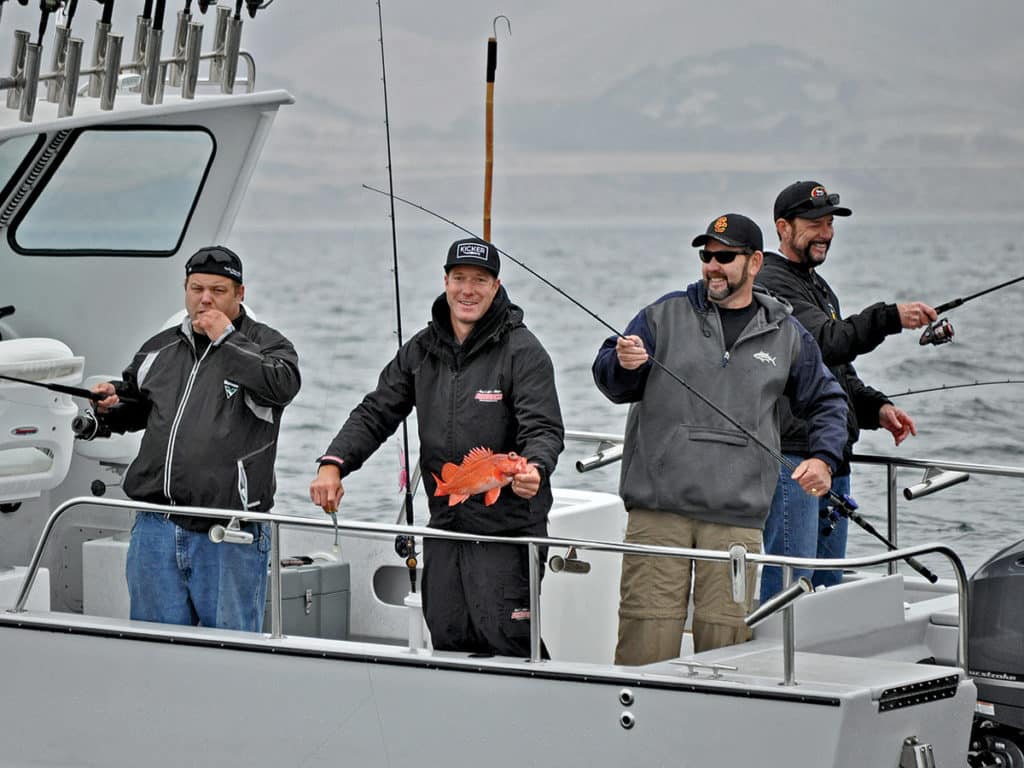
Picking out fishing tackle is probably the easiest part of pre-trip planning. Just about any rod-and-reel combo will work for rockfish, but for deeper water, I recommend a small levelwind reel, like a Penn Squall 15, matched with a medium-heavy 8-foot graphite rod. This combo will give you plenty of pulling power, and the levelwind reel takes a lot of the work out of winding up from the bottom. Whichever reel you choose, make sure it will hold at least 200 yards of braided line so your reel won’t be empty if you’re fishing the 360-foot max depth that is legal for rockfish off California. The Squall, for example, holds 300 yards of 50-pound line.
While fishing in deeper areas can be good, I prefer to target waters less than 250 feet. That allows me to use bass gear, like an Abu Garcia Toro Beast 60 with an 8-foot heavy-action bass rod. When filled with 50-pound braid, the reel holds plenty of line to land rockfish. In both cases, I’ll add 10 feet of 30- or 40-pound fluorocarbon leader before tying on hooks or lures.
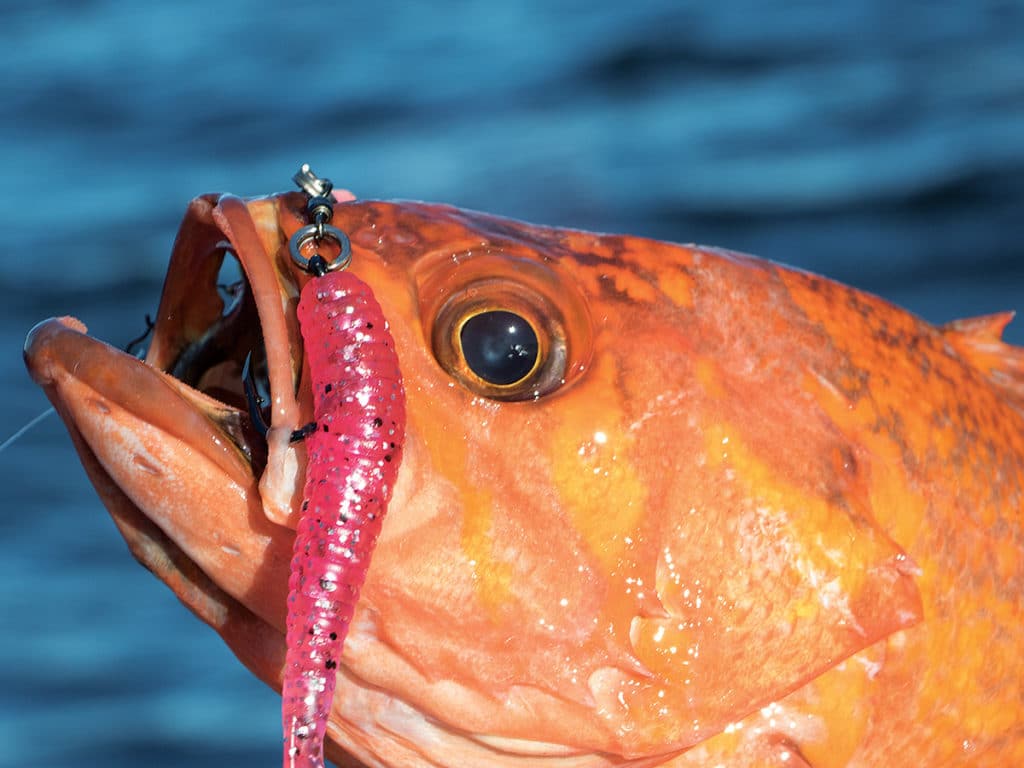
Stocking up on terminal tackle is simple. All you’ll need are some hooks in varying sizes and torpedo sinkers weighing 8, 12 and 16 ounces. If you like to fish jigs, I’ve found that the Ahi Assault jigs in 8 and 12 ounces work great in deeper water, while the Savage Gear Squish Jig in 80 to 130 grams gets the job done in the shallower spots. Rockfish will also readily bite swimbaits in a variety of colors. I’ll usually fish a 5-inch MC Swimbait on a 3- to 4-ounce lead-head, but if I’m targeting lingcod, I’ll upsize to a 9-inch MC Viejos Series Swimbait. Both jigs and swimbaits are designed to draw reaction strikes, so drop them to the bottom and bounce your rod tip until you get a bite.
When fishing bait, my rigging configuration varies depending on my bait and depth fished. Live squid is by far the best rockfish bait, but properly cared for, fresh frozen is a close second. I tend to stay away from sardines because they attract salmon grouper (bocaccio), which aren’t the best table fare. As a rule, if I’m fishing less than 200 feet of water, I’ll fish a single dropper loop. Any deeper and I’ll add a second loop and hook. If using squid for bait in less than 200 feet of water, I’ll pin it on a 1/0 treble hook. The larger hook keeps the smaller fish away because they have trouble getting it into their mouths. This sometimes results in missed bites, but it does cut down on small-fish bycatch ratio. When fishing deeper or using two hooks, I’ll trade out the treble for a bait-appropriate light-wire circle hook; these set themselves, so you don’t need to swing on the fish when you get bit and risk tearing off your second bait in the process.
About the Author: Erik Landesfeind is a freelance fishing writer and the Southern California editor at BD Outdoors, a popular online fishing forum. He has more than 30 years of experience fishing California’s inshore and offshore waters for a variety of species.

